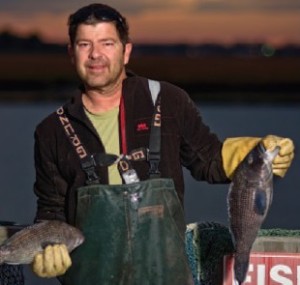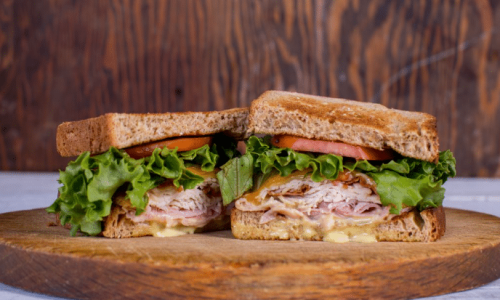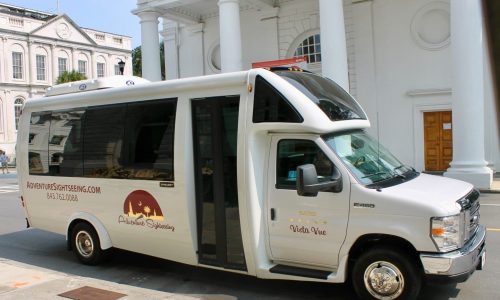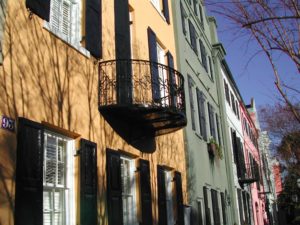If you want to hear the tales of long ago, the behind-the-scenes story of the South Carolina Lowcountry and especially of the food we love to eat, get a shrimper or an oysterman on the water.
Trawlers returning to the docks after a long, hard day of work on the water, shallow-bottomed bateaux slipping off into the early morning mists, and hard-working men casting drop nets into the water: these are scenes that have shaped the history and the thinking of the people of Charleston and the surrounding islands as much as any historic building.
People raised on the water usually can’t imagine doing anything else. There’s a certain gleam that gets in their eyes when they talk of days out on the open water, riding the steady roll of the waves.
That gleam is shaped by geography. An abundance of meandering intracoastal waterways, marshes, rivers and ocean waters make the area pitch perfect for harvesting succulence from the deep. Whether the passion is saltwater angling for red drum, casting for largemouth bass in freshwater, or just dropping a line baited with a chicken neck into the water and waiting, net at the ready, for a big, tasty crab to latch on, this is the place to be if you love fish or shellfish. From signature dishes such as shrimp and grits to seasonal traditions like oyster roasts and crab cracks, seafood is an integral part of life in Charleston.
Ask a few locals about blue crab, the “savory beautiful swimmer,” and you will hear stories aplenty about the Jimmies (male blue crab) and Sooks (female). If you’re lucky, you may even get a few delicious recipes for crab cakes, she-crab soup or pan-fried soft-shell crabs.
Charleston has been enjoying a culinary renaissance for several years now, one that shows no signs of slowing down. Right now, 
Seafood lovers love to stick together and support the causes that keep the fisheries healthy and vibrant. When research revealed that certain fish were in danger of being overharvested, several organizations, including the South Carolina Aquarium, Coastal Conservation League, and other groups, chefs and restaurants united for the cause.
It didn’t take long for “sustainability” to become a hallmark of the local food scene. The term simply refers to food that’s harvested with respect for the long-term viability of either the individual species or the overall ecosystem.
Researchers monitor the impact that commercial and recreational fishing has on different kinds of fin or shellfish and, if the species seems to be in danger of being depleted, recommendations are made to avoid that particular species on the menu until such time as it can be replenished.
In other words, both chefs and diners alike can “vote with the plate.”
“Given a choice, I think that people would want fresh and local every time,” local fisherman L. David Thomas once told Traveler of Charleston while he was unloading a fresh catch from his boat, China Girl, to Crosby’s Fish and Shrimp, a locally owned seafood market on Folly Road. “But you have to know what you’re getting and you have to make your choice known. That’s the only way the local seafood industry is going to keep going.”
A side benefit of the emphasis on sustainability and choosing local foods in general is that it added an extra boost to the already flourishing culinary creativity in Charleston kitchens. Instead of simply working with the “old standbys,” chefs craft new and fascinating plates made from fish such as triggerfish, rainbow trout or striped bass, with absolutely delicious results.
The most immediate benefit of buying local, sustainably harvested seafood is that it is the freshest seafood available. Taste wild-caught shrimp fresh from crisp, clear Atlantic waters and you’ll never look at a frozen bag of imported product the same way again. There are health benefits for the consumer, benefits for the environment, and benefits for the economy when local, sustainable product is chosen. It’s a win-win situation all around when you can feel really good about eating really good food.
That’s important in a place that prides itself on its traditions. Shem Creek in Mount Pleasant has long been famed for its fleet of shrimp boats, as is McClellanville, a fishing town several miles up Highway 17 North. Cherry Point Seafood near Rockville is one of the few remaining fish houses and maintenance docks in the area.
There are only a few who remain from the golden era of commercial fishing in Charleston, and you will still see those veterans of the industry mending nets and patching sails near the docks they love so well. They’re the ones who remember how it was in days gone by.

But turn the hands of time back a hundred years or so and Market Street was a very different place. Fishermen unloaded their catch at the east end of the street and vendors carted it up to roll through the market area. This was the era of the fabled “Mosquito Fleet,” when fish, shrimp, oysters and crab were usually purchased fresh off the boat or from a street vendor.
Those days, and the flotilla of small fishing vessels that harvested the seafood, are immortalized in Charleston’s favorite opera, “Porgy & Bess.”
Families who make their living harvesting the coastal waters will tell you: it is very hard work. It takes muscle to crack the clusters out of the oyster beds and heft the weight back to shore. The work is labor intensive. It keeps the back strong, the hands calloused, and must be done whether the sun is hot or the rain is cold.
Keeping that fresh, local seafood on our tables means long, hard days out on the water with the sun and the salt and the waves.
And they wouldn’t have it any other way.





















